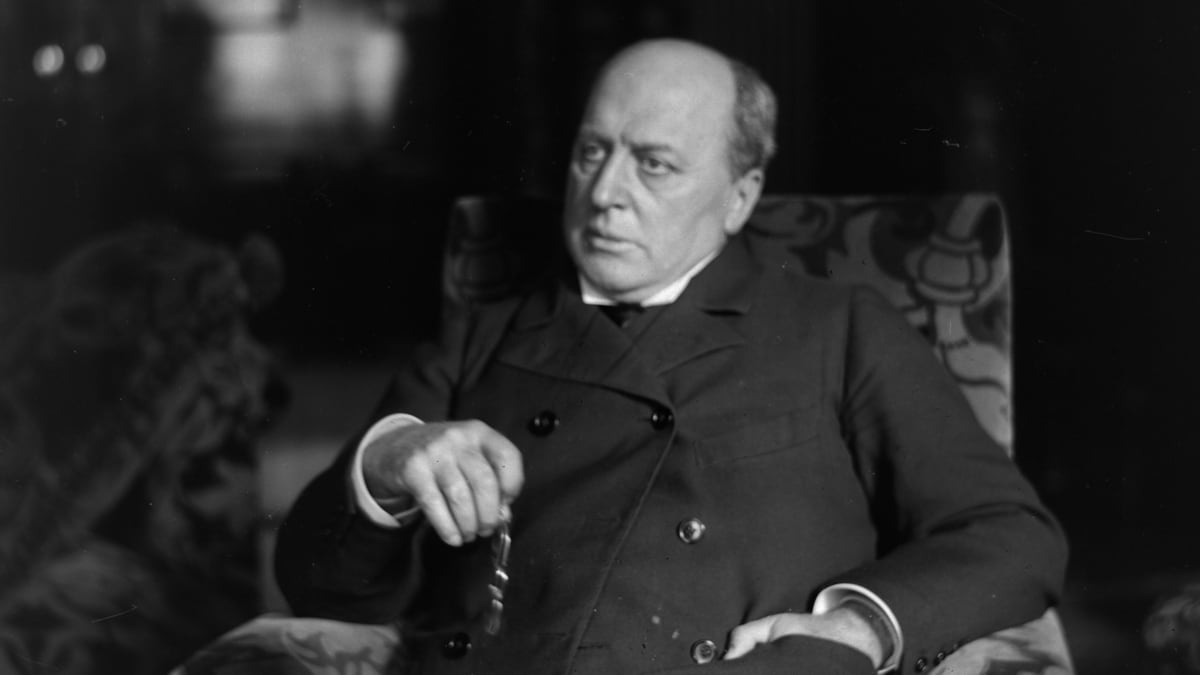What makes a great American novel? Or rather the Great American Novel, for the article in that familiar phrase is important, suggesting that there can be just one, a particular book that fills a particular need. Everybody has their candidate—Moby Dick, Gatsby, Absalom, Absalom—and it’s long been clear not only that there are many great American novels, but also that they come in all shapes and sizes and flavors. Yet that idea of singularity remains, an idea hardwired into the language ever since the Civil War novelist John W. DeForest first used the term in an 1868 essay in The Nation.
DeForest himself believed that nobody had yet written such a novel. He never mentioned Melville, whose best work was then forgotten, and saw Hawthorne as too self-consciously a New Englander, and too far removed from daily life. Harriet Beecher Stowe had come the closest, and though DeForest faulted both the plot and the style of Uncle Tom’s Cabin, his praise of it nevertheless suggested what a great American novel might be. Stowe took the whole country’s dilemma of race and region as her subject. She avoided the “localisms” into which most writers fell, and her picture had instead a “national breadth,” an attempt to get beyond the concerns of one section or another. Still, she never again found that range, and DeForest suggested that the job of “painting the American soul” now lay in other hands.
DeForest’s own attempt, Miss Ravenel’s Conversion from Secession to Loyalty, deserves to be better known, above all for its literally visceral account of the war itself. The next generation, though, would present the nation with several stronger candidates, writers whose careers were only just beginning at the time DeForest coined that essential phrase. William Dean Howells wrote several great novels, books like A Hazard of New Fortunes about money and real estate, labor, and success. There would be Huckleberry Finn, that magnificent journey down the river into the heart of our founding sins. Nobody, however, came closer to writing that novel than Henry James in The Portrait of a Lady, and not in spite of the fact that he set his work in Europe, but precisely because of it.

The young James had a lot of irreverent fun with the idea of the Great American Novel—the GAN, as he called it. He would have agreed with DeForest that we didn’t yet have one, and yet he had always had greatness on his mind. He had moved to Paris in 1875 and then to London, and he found his special subject in the American encounter with Europe, in what it had to teach us about the limits and limits of our own independence. James saw those lessons as an issue of individual freedom above all, though they do indeed have larger implications. To what degree are we as Americans truly self-made and self-reliant? Are we really at liberty to do what we please, to select our own destiny? Those questions had fascinated James from the start, and in 1880, after a long period of careful apprenticeship, he was at last ready to look for answers.
The Portrait of a Lady tells the story of a young woman named Isabel Archer, who claims that she’s fond of her freedom but who stands just the same, after the death of her father, on the verge of marriage to a New England mill owner. Then she suffers a fairy-tale rescue at the hands of an aunt. Taken to Europe and furnished with an unexpected inheritance, Isabel finds what looks at first like an ever-expanding field in which to exercise her own sense of independence. She starts by rejecting one suitor after another, including an English lord who seems to her less a person than a personage, a set of inherited possessions and powers. She tells her aunt, moreover, that “I always want to know the things one shouldn’t do,” not simply in order to do them, but so as to choose. Isabel needs to know other people’s rules in order to make her own. For she sees herself, in Emerson’s words, as perfectly self-sufficing, and the consummation of that radical autonomy, that utterly American desire to choose, will be to elect a European home.
Isabel walks at night through London with the sense that “the world [lies] all before her,” that she may do whatever she likes. James’ words are, however, a deliberate echo of what Milton wrote in expelling Adam and Eve from Paradise, and in this fallen world not even Isabel can have that freedom. One of the novel’s most suggestive moments comes during a discussion of clothing. Isabel sees her own possessions as irrelevant to her sense of self, arguing that “Nothing that belongs to me is any measure of me.” Her friend Madame Merle, in contrast, sees those things as both shaping and expressing the self—her very dresses are a kind of shell within which the self is bound and through which other people come to know it. To Madame Merle the self is socially determined and not fully separable from the world around it. But Isabel is the voice of American exceptionalism, and she believes only in her own enabling and ennobling isolation.
That belief is one that her later experience will challenge, and the novel suggests that what's true for the character is true of her country as well, each of them attempting to define their relation to the world outside. What Isabel will eventually learn is simply what the Old World has always had to teach us. She learns that her own most intimate relations have been determined by things that happened before she was thought of, by a past of which she was ignorant and that she only understands when it’s already too late. She learns that America itself has had no separate or special creation, that there is no fresh start, no city on a hill, no exemption from history itself. None of us are entirely self-made, and James’s account of the limits of that Emersonian self-reliance, the limits of our own most cherished beliefs, is what makes The Portrait of a Lady a great American novel.
Of course the book offers much more than that: wit, charm, and an enduring sense of evil; the wide lawn of an English country house and the beauty of a Tuscan hillside; memorable characters and an ending so daringly open that it outraged its first readers. Yet we shouldn’t see the Great American Novel as a single work—we should instead think of the term as naming not a particular book, but a particular kind of book. The Great American Novel is a category that includes things as different as The Scarlet Letter and Beloved, The House of Mirth and Blood Meridian: novels that tell us things we don’t especially want to hear, that are restless and brave and never complacent in examining the terms of our national identity. Like Isabel Archer—like Henry James—they take nothing for granted, and that very challenge makes them each an example of what American life should be.






